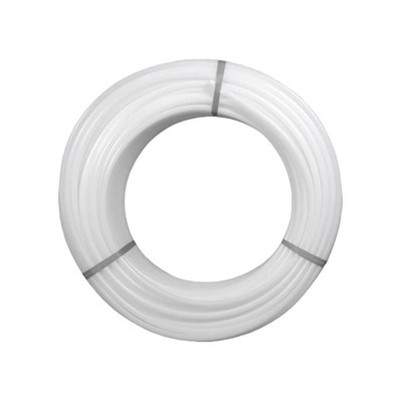What is the chemical resistance of PE - Xa/EVOH Pipe?
Leave a message
Hey there! As a supplier of PE - Xa/EVOH Pipe, I often get asked about the chemical resistance of these pipes. So, I thought I'd write this blog to share all the info I've gathered over the years.
First off, let's talk about what PE - Xa/EVOH Pipe is. The PE - Xa part stands for cross - linked polyethylene of type a. Cross - linking gives the polyethylene some extra strength and durability. EVOH, on the other hand, is ethylene vinyl alcohol copolymer. It's known for its excellent gas barrier properties. When you combine these two materials, you get a pipe that's pretty unique and has a wide range of applications. You can learn more about PE - Xa/EVOH Pipe on our website.
Now, let's dive into the chemical resistance. Chemical resistance is super important for pipes because they're often used to transport different kinds of fluids. If a pipe isn't chemically resistant, it can break down over time, leading to leaks and other problems.
PE - Xa has good chemical resistance to a lot of common chemicals. It can handle most weak acids and bases. For example, it can resist acetic acid, which is found in vinegar. This means that if you're using the pipe to transport a mildly acidic solution like a diluted vinegar solution, the PE - Xa layer will hold up well.
It also has decent resistance to salts. Many industrial processes involve the transport of salt solutions, and PE - Xa pipes can handle them without getting corroded easily. This makes them a great choice for applications in the chemical industry, water treatment plants, and even in some agricultural settings where salt - containing fertilizers might be transported.
However, PE - Xa isn't invincible. It's not very resistant to strong oxidizing agents. Chemicals like concentrated nitric acid or hydrogen peroxide can cause the PE - Xa to degrade. These strong oxidizing agents can break the cross - links in the polyethylene, weakening the pipe structure. So, if you're dealing with these kinds of chemicals, you need to be extra careful and might need to consider other pipe materials.
Now, let's talk about the EVOH layer. The EVOH layer in the PE - Xa/EVOH Pipe is mainly there for its gas barrier properties, but it also contributes to the overall chemical resistance. EVOH has good resistance to many organic solvents. For example, it can resist hydrocarbons like gasoline and diesel to some extent. This is really useful if you're using the pipe in an automotive or fuel - related application.
But like PE - Xa, EVOH also has its limitations. It's sensitive to high humidity. When exposed to high levels of moisture for a long time, the EVOH layer can start to lose its barrier properties and might even become more brittle. So, if you're using the pipe in a very humid environment, you need to take this into account.
Another factor that affects the chemical resistance of PE - Xa/EVOH Pipe is temperature. Generally, as the temperature increases, the chemical resistance of the pipe decreases. At higher temperatures, chemicals can react more readily with the pipe materials. For example, a chemical that might not cause much damage at room temperature could start to degrade the pipe if the temperature is raised significantly. So, when you're using the pipe in a high - temperature application, you need to be extra cautious about the chemicals it's in contact with.
The thickness of the pipe walls also plays a role. A thicker pipe will generally have better chemical resistance than a thinner one. This is because there's more material to withstand the chemical attack. So, if you're dealing with more aggressive chemicals, it might be a good idea to choose a pipe with a thicker wall.
In real - world applications, the chemical resistance of PE - Xa/EVOH Pipe has been proven in many cases. For example, in the plumbing industry, these pipes are used to transport potable water. Since potable water usually contains only small amounts of chemicals like chlorine and fluoride, the PE - Xa/EVOH Pipe can handle it without any issues. The chlorine in the water is a mild oxidizing agent, but the PE - Xa layer can resist it well over a long period.
In the heating and cooling systems, the pipes are used to transport hot or cold water. The chemicals in the water, such as scale inhibitors and corrosion inhibitors, are usually chosen to be compatible with the pipe materials. And the PE - Xa/EVOH Pipe can resist these chemicals while maintaining its structural integrity.
However, it's always a good idea to test the pipe with the specific chemicals you'll be using in your application. You can do small - scale tests in a laboratory setting to see how the pipe reacts. This way, you can be sure that the pipe will work well in your particular situation.
If you're in the market for a pipe that offers good chemical resistance for a wide range of applications, our PE - Xa/EVOH Pipe could be a great choice. But before making a decision, make sure to consider all the factors I've mentioned above, such as the type of chemicals, temperature, and humidity.
If you're interested in learning more or want to discuss your specific requirements for a project, don't hesitate to reach out. We're here to help you find the best pipe solution for your needs. Whether you're a contractor working on a large - scale construction project, an engineer designing a new chemical process, or a homeowner looking for a reliable plumbing solution, we've got you covered.
References


- "Handbook of Plastics, Elastomers, and Composites" by Charles A. Harper
- "Polymer Science and Technology" by Donald R. Paul and Charles B. Bucknall




